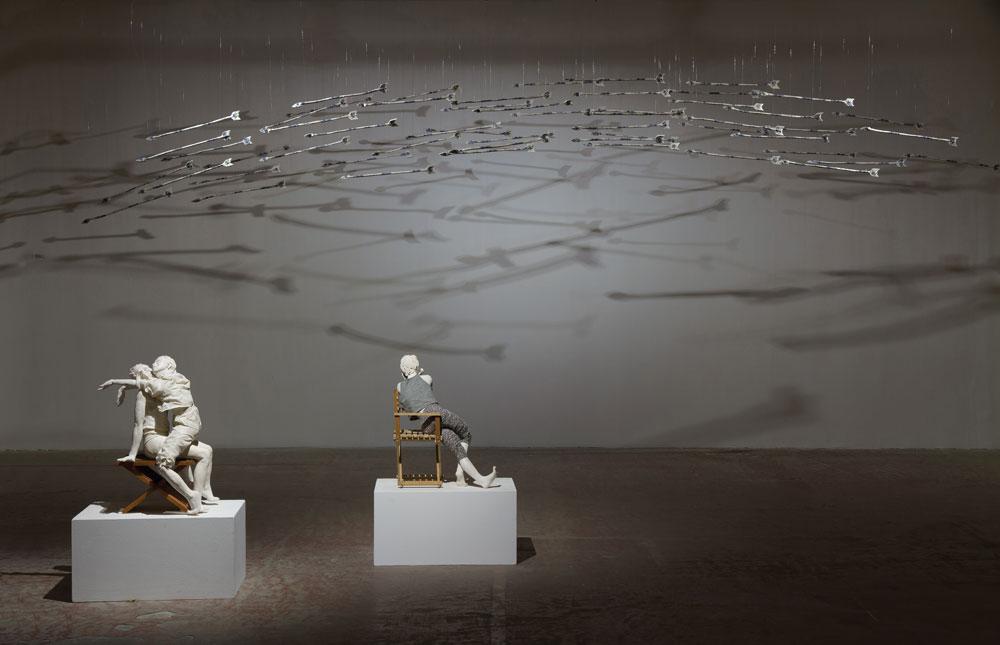Broken plates, white vases, decorative figurines—okay—but a full-size reproduction of a Chevy rear axle? That’s something I wasn’t expecting to see made out of such a delicate and clearly underestimated material.
The idea of the exhibition “Porcelain: Breaking Tradition” was to surprise with the variability and applicability of ceramics and porcelain in the production of contemporary art, and that it did—as well as amaze. Porcelain is not what we might think it is, limited by its twee tradition of dinner-table finery. Artists have made incredible work with it throughout the ages—Judy Chicago’s The Dinner Party (1974–79) comes to mind, not to mention Shary Boyle—but what this exhibition made clear is that there are more than just these two exceptions. At a time when universities are closing their ceramics departments, porcelain remains the material of choice for a growing number of artists.
Curators Rhéal Olivier Lanthier and François St-Jacques brought together 16 of them for this exhibition. The risk with that number of participants tied together exclusively by a material is that the exhibition might seem like a mishmash, thematically; but it was far from it. Somehow, in the flow from work to work over the large gallery’s first two floors, the artists’ themes and subjects—as individual as they may be—dovetailed into one another like links in a chain.
Laurent Craste makes anthropomorphic white vases and urns that, in their crests and forms, represent moments in history—the assassination of the Romanovs in 1918, for example, represented by Russian Imperial–style vases pierced with bullet holes. Brendan Tang creates whimsical, multi-coloured, manga-inspired, utilitarian-seeming objects that in fact have no purpose at all. Anne Ramsden’s double-image photographs feature fragments of broken plates reminiscent of childhood—they are decorated with Petit Prince and Beatrix Potter characters—matched with images of the plates when they are reassembled whole.
François Morelli’s monumental Constellation (2004), made up of plates on the floor, and La volée de l’envolée (2006), a suspended metal flying machine, address food, community, human achievements and the forces that bind and separate us. The rear axle mentioned prior was created by Clint Neufeld, a discovery for me, whose meticulous reproductions of hefty mechanical objects in this most fragile material created a delicious contrast, both physical and conceptual.
Room after room of this immersive exhibition delighted and served to reveal the unanticipated possibilities of something taken for granted.
This review is from the Spring 2014 issue of Canadian Art. To read more from this issue, visit its table of contents. To read the entire issue, pick up a copy on newsstands or the App Store until June 14.









